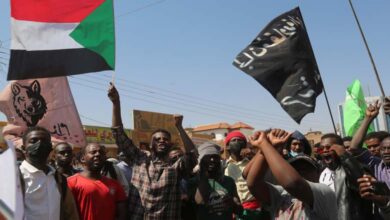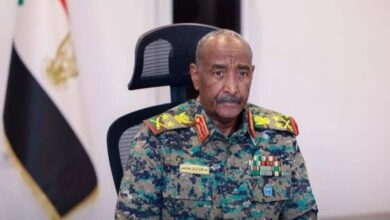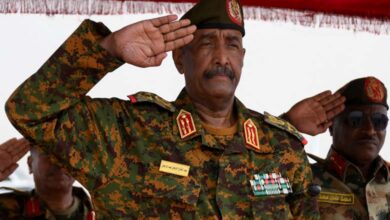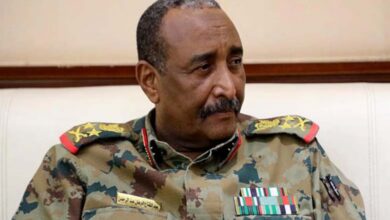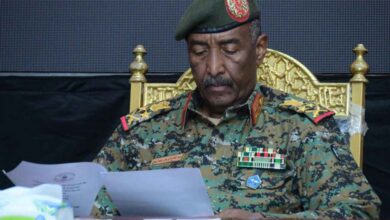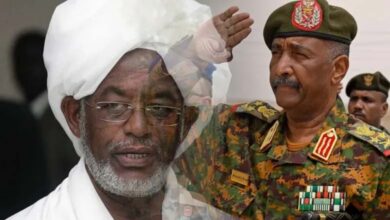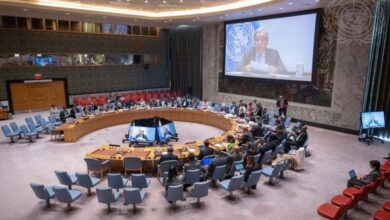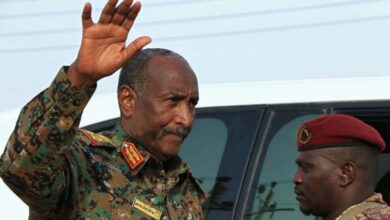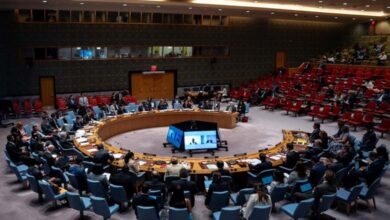The Return of Islamists in Sudan: Military Support and Regional Alliances Disrupt Political Transition
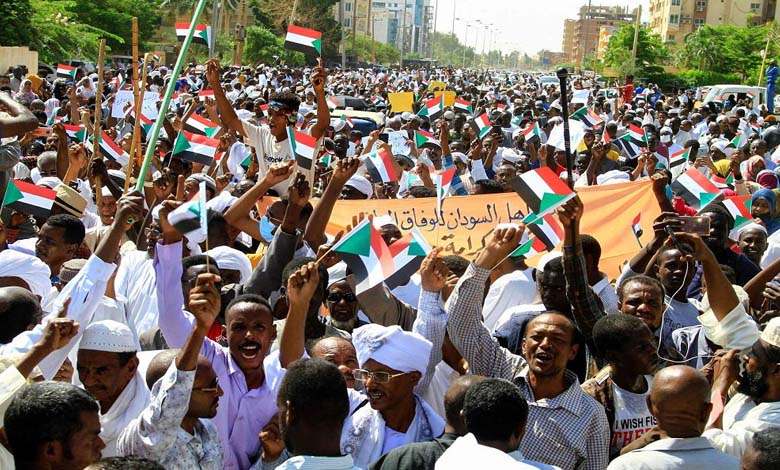
In a detailed report published on July 25, 2025, Reuters revealed that the Sudanese Islamic movement, linked to the regime of Omar al-Bashir, is seeking to seize the “post-war” moment by backing the army. It is betting on a prolonged transitional period under military dominance, followed by elections that would enable its return via the ballot box. This scenario, according to the report, suggests a deep reshaping of domestic power dynamics and rising tensions with regional actors, particularly the UAE, which has historically taken a hardline stance against political Islam.
-
Calls to Designate the Islamic Movement Muslim Brotherhood in Sudan as a Terrorist Organization
-
The Islamic Movement’s Retreat and al-Burhan’s Silence: Questions Surround the Political and Military Cover Behind the Strategic Strikes in Port Sudan
What does Reuters say?
Return strategy via army and elections:
Ahmed Haroun, leader of the dissolved National Congress Party and wanted by the International Criminal Court, stated that elections could pave the way for the return of his party and the Islamist movement, predicting the army would remain in power post-war. His comments were echoed by other platforms citing the Reuters interview.
Foreign support networks:
According to military sources, prominent Islamist figures have reactivated old channels with Iran, Turkey, and Qatar to supply arms to the army — a move that could realign Sudan with regional blocs opposing so-called “moderate” states like the UAE.
-
Strategic Strike in Port Sudan Reveals Foreign Involvement, Iranian Arms, and Complicity of the Islamic Movement
-
The Military and al-Burhan’s Ties to the Islamic Movement: Secret Agreements and New Fronts
Rising political and field presence:
Although the army denies ties to any party, Reuters points to growing Islamist influence within the new power structures and along battle lines, with thousands of Islamist-linked fighters reportedly supporting the army.
A war ongoing since April 2023:
All of this is unfolding amid a devastating conflict between Sudan’s army and the Rapid Support Forces, which began in April 2023 and continues to reshape the country’s social and military landscape.
Why is tension rising?
Reuters argues that the rise of Islamists deepens internal rifts and increases friction with powerful regional actors — especially the UAE, which has worked since 2019 to contain Islamist movements. Tensions peaked in 2025 with official Sudanese accusations of Emirati support for the RSF, legal proceedings at the ICJ, sharp Emirati responses, and a diplomatic break announced by the army-led government on May 6. In this climate, any empowerment of Islamists in Sudan’s governance structures would likely widen the gap between Khartoum and Abu Dhabi.
-
The Situation in Sudan: The Army and the Islamic Movement in an Unstable Scene
-
The Islamic Movement in Sudan: Political History Military Connections and Renewed Political Fronts
Internal timeline: From the 2019 uprising to the 2023 war
- 2019: Fall of al-Bashir and beginning of a fragile civilian transition
- October 2021: Military coup led by Abdel Fattah al-Burhan ends the civil-military partnership
- April 2023: Outbreak of war between the army and RSF, now considered the world’s worst ongoing humanitarian crisis
This sequence opened a political and security vacuum that allowed Islamists to reorganize and insert themselves into military and security institutions seeking manpower, organizational skills, and foreign support.
-
The Political History of the Islamic Movement in Sudan and Its Relationship with the Army: The Case of al-Burhan
-
Efforts to Bridge the Divide within the Islamic Movement… The Sudanese Muslim Brotherhood on Hot Coals
Why do Islamists favor a “long transition”?
- A fragmented state: The war shattered institutions, creating space for well-structured actors like the Islamic movement to expand their reach.
- Weapons before the ballot box: In post-conflict settings, armed groups often push for a “security constitution” legitimizing military political roles — a vision Haroun has clearly endorsed.
- Shifting regional dynamics: The army-Islamist bloc finds strategic protection in closer ties with Iran, Turkey, and Qatar, blunting Western and Gulf pressure.
-
The Attempted Assassination of al-Burhan Sparks Debate on the Involvement of the Islamic Movement and the Army
-
Sudanese Army rejects ceasefire despite Ramadan, reflects Islamic Movement’s Stance
Potential regional implications
- Widening rift between Khartoum and Abu Dhabi: Any rise of Sudanese Islamists will be seen in the UAE as a reversal of its anti-Islamist agenda, possibly triggering harsher political, economic, or legal responses.
- Emergence of a rival axis: Renewed ties between Khartoum and Tehran, with open lines to Ankara and Doha, may turn Sudan into a new arena of regional competition, reshaping the Red Sea and Horn of Africa.
- Worsening humanitarian and security crises: The longer the war and the deeper the ideological militarization, the slimmer the chances for a comprehensive settlement. Instead, an “authoritarian peace” may emerge — excluding revolutionaries and civil society, while entrenching structural violence.
-
Are Yasser Al-Atta’s statements by order and direction of the Islamic movement ?!!
-
The Political History of the Islamic Movement in Sudan and Its Relationship with the Army: The Case of al-Burhan
Three most likely scenarios
- Prolonged military transition with electoral cover:
The army promotes a “Sudanese model” of political rule, with elections held in a security-driven environment favoring well-organized and well-funded forces. Result: Islamists return through the ballot. - War of attrition with fragmented power:
The conflict continues unresolved, dividing Sudan among the army, RSF, and local (tribal/movement-based) entities. Islamists retain influence, but not full state control. - International pressure to tie aid and reconstruction to civilian transition:
Humanitarian collapse may prompt Western, African, and “moderate” Arab actors to insist: no reconstruction funds without a clear civilian process, accountability for abuses, and the removal of arms from politics.
-
The Islamic Movement in Sudan: Political History Military Connections and Renewed Political Fronts
-
How the Sudanese Judiciary Became a Tool for the Muslim Brotherhood… with Names
What does this mean for Sudanese civilians?
- Rebuilding alliances: Revolutionary and civil forces must unite across ideological lines to counter the organized military-Islamist alliance.
- Proposing an alternative security discourse: Civilians must present a national security vision that balances stability with democratic reform.
- Strategic internationalization: Legal tools, targeted sanctions, and humanitarian advocacy must be used to penalize those who merge arms with politics or block relief.
-
Sudan: The Muslim Brotherhood Attempts to Infiltrate the National Umma Party
-
Are the Muslim Brotherhood Regaining Influence in Sudanese Trade Unions?
Reuters’ July 25 report is not merely a chronicle of the Islamists’ return — it is an early warning that Sudan is entering a phase of “prolonged military peace,” hemmed in by ideology, arms, and regional rivalries. The country now stands at a crossroads: either a political settlement restoring civilian legitimacy and revolutionary demands, or a historical return to one of the region’s most divisive and destabilizing political projects.
-
Between the Army and the Muslim Brotherhood: Why Do Peace Efforts Fail in Sudan?
-
Rapid Support Forces Warn of Islamist Threat to Sudan’s Unity


